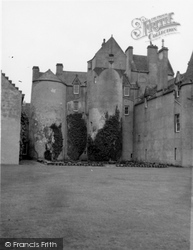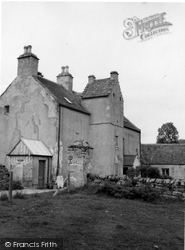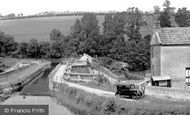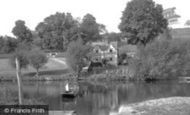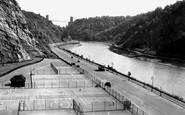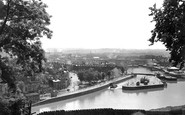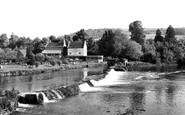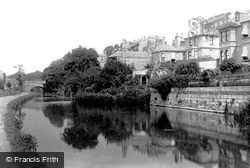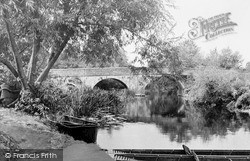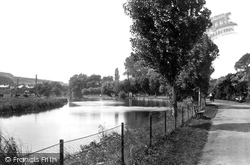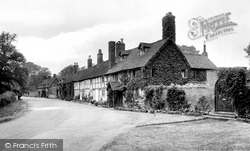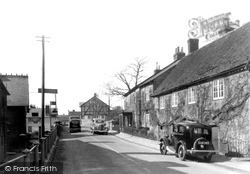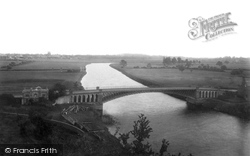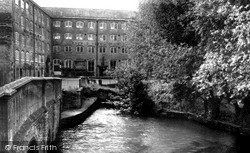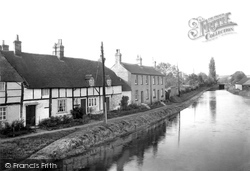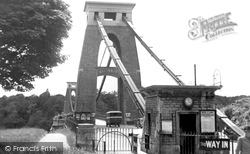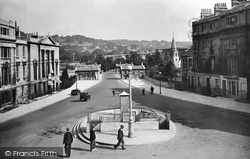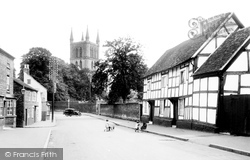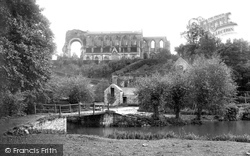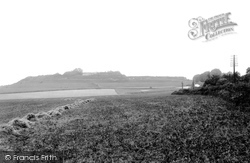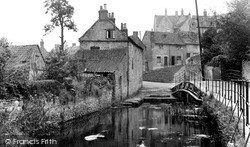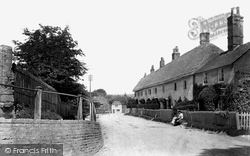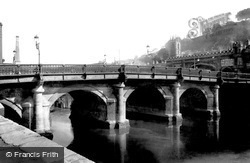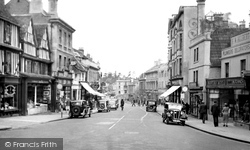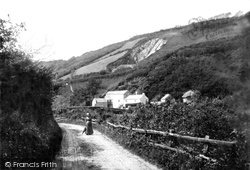Places
1 places found.
Those places high-lighted have photos. All locations may have maps, books and memories.
Photos
2 photos found. Showing results 1 to 2.
Maps
Sorry, no maps were found that related to your search.
Books
Sorry, no books were found that related to your search.
Memories
13 memories found. Showing results 1 to 10.
Canter Across The Canal
It must have been around the late 1960s, early 1970s when my sister and I used to ride our ponies down to Avoncliff. We lived a short distance away in Upper Westwood and our mother liked us to ride along the tow path as it ...Read more
A memory of Avoncliff in 1970 by
The River
The River Avon dominated most of the kids' lives in the village! I remember swimming 'down the mill' and at Gunville where my Great Grandmother (Sarah Marks) lived. We used to scrounge used inner tyre tubes from Mr Stansfield (who ...Read more
A memory of Figheldean in 1957 by
Post War Brownsover
From the late 1940's to 1969 I remember this area as part housing, part prefabricated homes because of the war. Many old features were still around like barges carrying coal on the Oxford canal, the old disused mill, the ...Read more
A memory of Brownsover by
Camping Holiday
As a young teenager with fond memories of Evesham and surrounding areas, I enjoyed with two of my male friends, camping at Weir Camping Meadow, which was located by the River Avon down in the lower part of the town. The camping ...Read more
A memory of Evesham in 1940 by
Tennis Courts Portway Bristol
These Clifton Tennis Courts alongside Bristol's Portway road were built just after the road was opened. The new built Portway from Bristol to Avonmouth a very modern road in its day. The wide A4 Portway trunk road ...Read more
A memory of Bristol in 1930 by
The Kennet
The river is the Kennet and this view shows the junction of the Kennet river (from low level bridge on the right) and the Kennet and Avon Canal (towards the locks straight ahead). The tributary to the left is towards the West Mills flour mill (water powered). The view is upstream (West).
A memory of Newbury by
Growing Up
I was born on the 24th of July 1929 above a shop next to a pub called the Rose of Denmark, in Hotwells, Bristol, very convenient for Father to wet his whistle and my head at the same time. Father was born in 1893, Mother in 1895. They ...Read more
A memory of Bristol in 1930 by
Leaving School
So! Back to 11 Woburn Place, back to school on Hope Chapel Hill back to Hotwells golden mile with its 15 pubs. The War was still going on but there was only limited bombing and some daylight raids, the city was in a dreadful ...Read more
A memory of Bristol in 1945 by
Construction Of Bristol's Floating Harbour
Construction of the floating harbour: In the 18th century, the docks in Liverpool grew larger and so increased competition with Bristol for the tobacco trade. Coastal trade was also important, with the ...Read more
A memory of Bristol by
Bathampton Tea Gardens
This is a view of the Bathampton Tea Gardens which occupied the old buildings of Bathampton Mill, and the picture is taken from Bathampton Bridge. On the O.S. Somerset sheet XIV Revision of 1930 with additions in 1938. The ...Read more
A memory of Bathampton in 1959 by
Captions
40 captions found. Showing results 1 to 24.
Malmesbury is virtually surrounded by the two tributaries of the River Avon.
The Kennet and Avon Canal, authorised by Act of Parliament in 1794 and opened in 1810, linked Bristol with London, cutting a canal from the Avon in Bath to the Kennet, which was then canalised to the Thames
This is part of Binton Bridges, linked bridges which span the Avon between Welford and Binton by way of mid- stream islands.
This is how the River Avon looked alongside Churchill Gardens, just south of the city centre in 1923.The bridge in the distance is the old Harnham Bridge—the photograph was taken before the building
Bridge End is on the south bank of the Avon, where all the roads from the south previously met to cross into Warwick.
Here we see the Old Bridge just before its replacement by the present bridge; its ironwork superstructure cantilevered the footways out over the river.
To the north-west of the New Forest is the peaceful little town of Fordingbridge, named after the ancient ford and medieval bridge which facilitate a passage across the River Avon at this point.
The bridge was built by the Bishop of Salisbury around 1240 to facilitate trade between the new city and the south: the Cathedral spire can be seen in the background.
This view looks from the north bank of the Avon, near the toll bridge. The mill buildings are still in use (compare this view with the last one).
The beautiful River Avon penetrates to the very heart of England at Shakespeare's Stratford.
The bridge was built by the Bishop of Salisbury around 1240 to facilitate trade between the new city and the south: the Cathedral spire can be seen in the background.
St John's Bridge is on the left. The Avon Mill at this time was occupied by Hugh Dryden & Co Ltd, who sold antiques and works of art here until the late 1970s.
This view of the Kennet and Avon Canal, taken from the Town Bridge, shows the site of Hungerford Wharf.
Even the most hurried of visitors to Clifton was recommended to spend a few coppers and walk to the centre of the bridge and admire the view.
This is Thomas Telford's iron bridge, crossing the River Severn at its junction with the River Avon.
Beyond Walcot Parade is Cleveland Place, which forms a forecourt to Cleveland Bridge across the Avon.
Pershore is an old market town of considerable charm on the right bank of the River Avon.
This fine photograph of Malmesbury Abbey was taken from the north, with the abbey mill buildings below.
This was a large mill on the River Nadder just upstream from the confluence with the Avon.
Here the River Avon flows under Goose Bridge. This steep old bridge was unfortunately modernised in the late 1960s, but the medieval cutwaters underneath still remain.
At this time, Harnham has something of an identity of its own. Harnham Bridge crossed the Hampshire Avon just south of Salisbury between the twin hamlets of East and West Harnham.
Attractive bridges over the Avon are part of Bath. This one is notable for its ironwork.
A closer view (taken at the same time) of the timber-framed buildings in the High Street which have now disappeared. The bridge over the Avon is in the distance.
Three pairs of stones were driven by a water wheel, and produced 100 sacks of flour a week in 1869. The bridge over the Avon was built in 1893.


